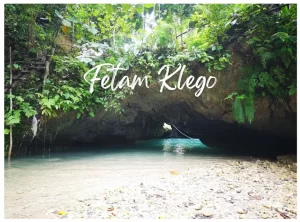Deep in the heart of the Municipality of Esperanza dwells a small community of Aetas. They hailed from the Islands of Iloilo and Luzon, travelling from place to place for their survival. Their nomadic practices had been their way of life.
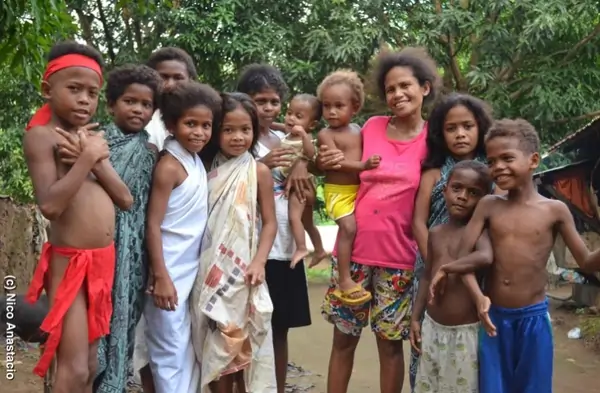
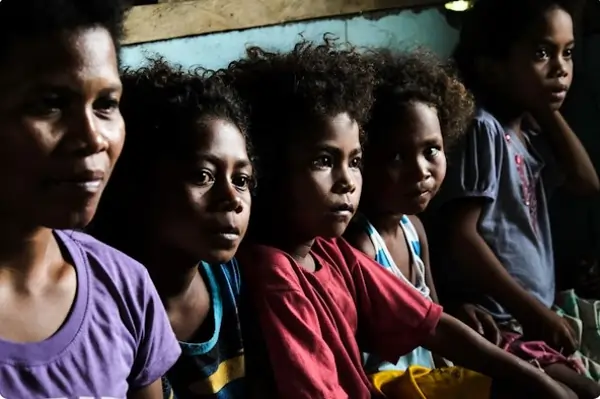
Photo Source: BiyahengJuanSided.Wordpress.Com & www.EtherScan.io
BEAUTY THAT IS SKIN DEEP
The physical appearances of the Aetas are very recognizable compared to that of the Ilonggos in the community in Barangay Numo, Esperanza, Sultan Kudarat. Their dark skin and kinky hair makes them stand out in the community.
According to the elders, those women who have darker skin color are considered the most attractive ones in their community. Although some of the members are married to other people from different cultural background, their offsprings still bear the mark of their beauty.
Although there are times that they feel indifferent from the community due to their physical appearances, people in the barangay are always aware not to discriminate them because of this.
Some members are confident enough despite of differences. Others have participated in community affairs such as meetings, gatherings and other social function.
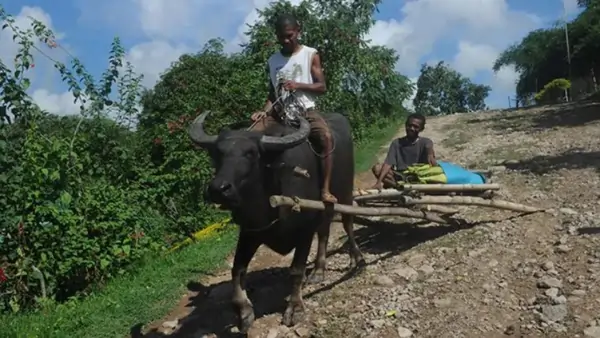
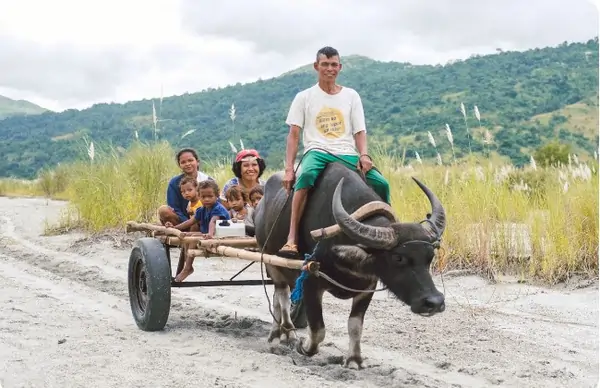
Photo Source: www.rappler.com & www.gogetfunding.com
NOMADIC LIFE
The Aetas are considered one of the very first people of the Philippines. They have traveled from place to place using the “land bridges.” Although these “land bridges” had disappeared, it did not hinder them from travelling from place to place.
In one of their travels, they ended up in the Municipality of Esperanza. Through the generosity of the Local Government Unit of Esperanza, they were granted with a piece of land where they can call their home. Even so, their nomadic tradition seems to live on.
They would stay in the community for a week or two. When their supplies are low, they would hire vehicles to travel to different places where they can find money to buy their needs. From the Municipality of Esperanza, they have travelled as far as Cagayan de Oro City for their exploits.
In the area where they travel, they would ask owners of vacant lots for them to settle for up to three weeks. They women will roam around to sell their wares, their handweaven purses and other indigenous medicines. These crafted items are made from the things they can find in the forest of Esperanza.
While the women are selling, the men look for temporary jobs, usually in construction companies. When they have enough savings, they would go back to the Municipality of Esperanza. Their huts, which was desserted for awhile, had become lively again, a result of their productive travel.
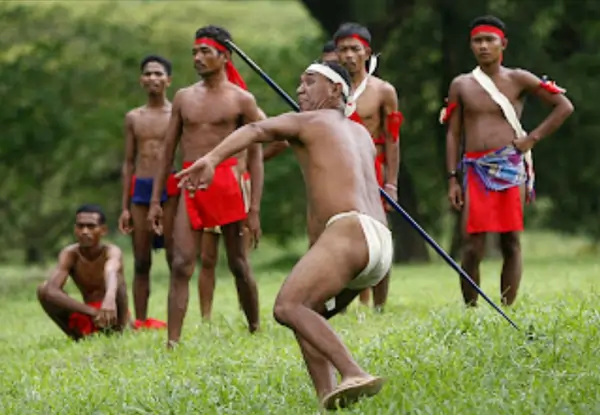
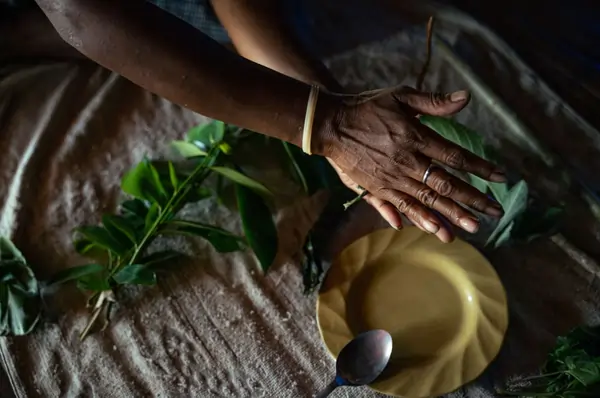
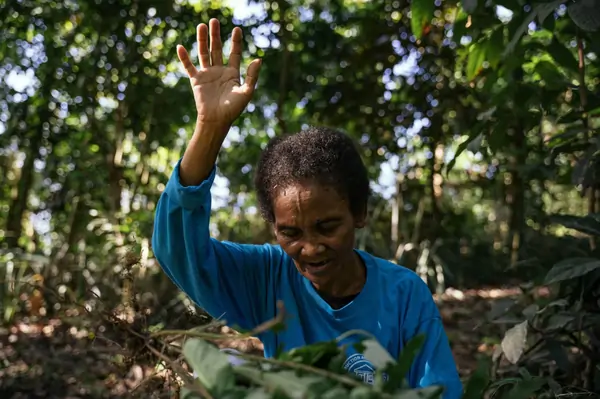
Photo Source: www.smokeofbliss.blogspot.com & www.pcp.ph
AETAS THE SUPERNATURAL
There are few accounts on the religious practices of the Aetas. However, they have adapted the religion of other cultures in the community. Most of them are already baptized in mainstream religions such as Christianity.
Few of their indigenous practices still survive until now. They are not known for agriculture but they are excellent hunter gatherer. The forest is their main source of materials they need.
One very particular item that they make is the “panagang.” It is a small bottle with various dried herbs and wood, soaked in oil. It is believed that once you have in your possession, the “panagang” can shield you from any harm. It is also believed that the oil can cure illnesses, specially those that are caused by supernatural entities or magical workings. They would sell these “panagangs” during their travels.
Aside from the “panagang,” they also sell various charms and herbs they gather from the forest.
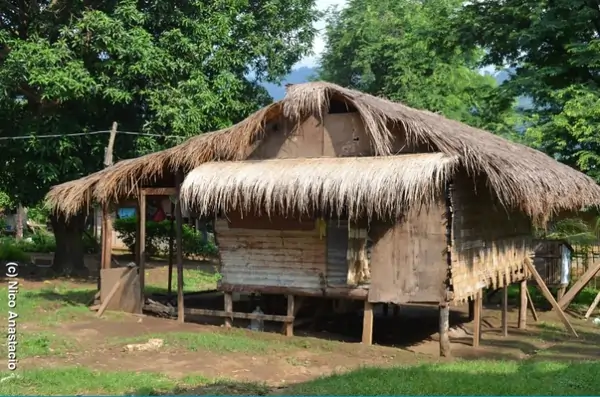
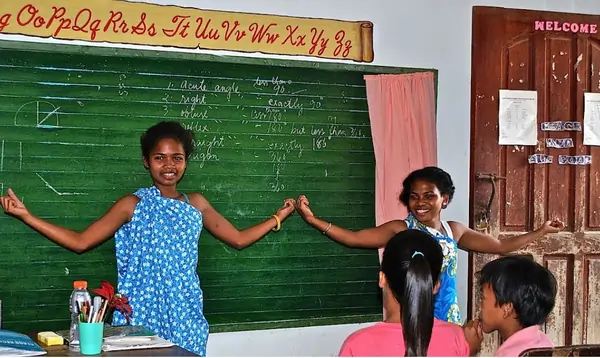
Photo Source: www.biyahengjuansided.wordpress.com & www.globalsistersreport.org
STRUGGLES FOR SURVIVAL
The struggles of the Aetas are very real. Their old ways had become a blessing and root cause of their problem. Although there are attempts of inteventions provided by the government, such efforts have less impact in alleviating the social status of the Aeta Community.
The Barangay unit have placed a Day Care Center near the Aeta community. However, this have little effects. It is because the education of the young ones are interrupted by their travels.
This is because when they travel, all of them will join. No one will be left in the community. Since there are no one to care for the younger ones, they would bring them.
Family planning is a real problem with the Aeta community. One hut, which is usually just a studio type hut, houses around three families.
During day time, the “papag” is where they eat. During night time, it is transformed into a bedroom. Since there are a lot of members in the household, only women and children sleep in the hut. While the men look for other places such as trees or “duyan” to sleep.
Health and sanitation is also one problem that must be addressed. You can see children playing around without clothes. Sometimes, wounds and scratches are only treated with oils or water or saliva. This situation posses a threat in the suvival of this community.
The Aetas of Barangay Numo are beautiful people inside and out. They are kind and gentle. They are very accommodating to guests and visitors. During mealtime, they would offer the best food to the guest first before partaking something for their own. They are an amazing tribe with a lot of things for us to discover.
Frequently Asked Questions
In fact, there are Aeta villages in Sultan Kudarat, though they are not as common there as they are in Luzon.
Some places in Sultan Kudarat where you can find aetas are in the mountains and forests.
Like their relatives on Luzon, the Aetas of Sultan Kudarat make most of their money from farming, hunting, and gathering.
The Aeta culture in Sultan Kudarat might be a little different because of the location and the customs, languages, and practices of other native groups. But most likely, important parts of Aeta society are still around, like their strong connection to nature and their traditional beliefs.
Aetas in Sultan Kudarat have the same problems as those in Luzon: they are poor, can't get enough schooling or medical care, and their ancestral lands are in danger because of natural disasters and development projects.
With help from the government and laws like the Indigenous Peoples' Rights Act, there may be non-governmental organizations (NGOs) and projects in Sultan Kudarat that are trying to help the Aetas.
People can help by giving money to local projects, spreading information about the Aetas' plight, and honoring their rights and cultural traditions. To ensure long-term growth and empowerment, it is important to work with neighborhood groups and Aeta communities.



